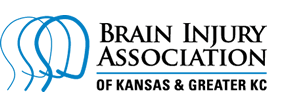ABOUT BRAIN INJURY
WHAT IS BRAIN INJURY?
Every year, 2.5 million Americans sustain a traumatic brain injury. An estimated 5.3 million Americans – a little more than 2 percent of the US population – currently live with disabilities resulting from traumatic brain injury.
Our brain weighs about 4 pounds and is made of extremely soft tissue that is floating in fluid in the skull. Brain injury can be called by different names, like concussion, shaken baby syndrome, and head injury to name a few.
Brain injury does not diminish a person’s intelligence, it merely alters how the brain performs tasks. It can be described as mild, moderate or severe, but no matter what the severity, every brain injury is serious and must be treated as such.
The brain can be hurt in many different ways; injuries to the brain are classified as non-traumatic or traumatic.

NON-TRAUMATIC
The challenges someone with a non-traumatic injury faces can be different, but are often very similar to those faced by someone with a traumatic injury.
Examples of types of non-traumatic injuries:
- Anoxic & Hypoxic brain injuries are brain injuries characterized by a lack of oxygen to the brain. Anoxic and hypoxic brain injuries are commonly associated with strokes, although strokes are not the only causes of these this type of brain injury.
- Medical issue or disease such as contracting meningitis or encephalitis, infection or having a brain tumor.
- Stroke or aneurysm or bulge in a blood vessel in the brain.
- Brain hemorrhage which occurs when there is bleeding in or around the brain.
TRAUMATIC INJURIES
Falls into two different categories:
- Open head injuries are those in which the skull is crushed or seriously fractured. Open head injuries also happen when the skull is penetrated, as in a gunshot wound.
- Closed head injuries, in which the skull is not damaged, occur much more often, usually because of a car accident or fall.
The brain tissue is soft and can be compressed, pulled and stretched. This can happen easily when there is a sudden change in speed such as in a car accident or fall. The brain actually moves around inside your skull and can be damaged when it rubs or hits against the inside skull ridges.
A traumatic brain injury (TBI) is an insult to the brain caused by an external physical force, and falls under the more general “acquired brain injury” heading. A TBI may produce a diminished or altered state of consciousness, and results in an impairment of cognitive abilities or physical functioning. It can also result in the disturbance of behavioral or emotional functioning. These impairments may be either temporary or permanent and cause partial or total functional disability or psychosocial maladjustment.
There are many different causes of a TBI, including, but not limited to, car crashes, falls, assaults, sports-related mishaps, proximity to explosions, exposure to toxic substances and domestic or child abuse. A brain injury may result in impairments in one or more areas, including cognition; speech-language communication; memory; attention and concentration; reasoning; abstract thinking; physical functions; psychosocial behavior; and information processing.
If you or a loved one has sustained a brain injury, the Brain Injury Association of Kansas and Greater Kansas City can help.
For more statistical information on brain injury, contact the Centers for Disease Control and Prevention.
Facing a brain injury is a difficult challenge. The Brain Injury Association of Kansas and Greater Kansas City is here to help. Call 800-444-6443 or 913-754-8883, extension 1, to reach our Program Director.


